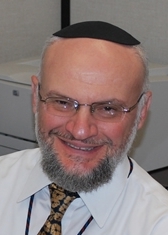
MENU
STIDS 2015 Home
About--
Topic list
Program Cmte
Venue & Local Info
Registration
Program--
Keynote Speakers
Tutorials
Best Paper Award
Agenda & Papers
Download Agenda
Proceedings
Call for Papers
Important dates
Submission details
Classified Session
Download CFP
C4I
Home

SEMANTIC
TECHNOLOGY FOR
INTELLIGENCE,
DEFENSE, AND
SECURITY
|
Dr. Leo Obrst
Date
Title
|

|
The Internet of Things is already an awkward, overly confident adolescent learning to get along with the rest of computing society. When a 2005 paper asking for “Sympathy for the Sensor Network Debugger” was presented (Ramanathan et al., 2005), Juniper Network’s recent estimate of 38 billion connected things would have seemed farfetched. IoT is not new. The old: closed real time sensor-edge networks, distributed computing, loosely coupled heterogeneous networks, bridge-building across disparate domains, software that reasons about real world events. But a lot is new. Streaming data platforms (Paypal, Prometheus, [] cite more), software-defined networks, ready access to cloud-based reasoning APIs. In this talk we take a whistle-stop tour of use cases around a single family of sensors: the smart humidistat (e.g, Ecobee Si, Honeywell VisionPro and FocusPro). We identify the issues raised by the use case family and suggest aspects of those issues best addressed by ontology-based solutions. We conclude by citing opportunities to integrate ontologies into model-based engineering approaches, highlighting lessons from the 2015 Ontology Summit (Underwood et al., 2015). Domain models are needed for chillers, data centers, refrigeration units http://kbros.co/2bFzBSD . Cross-domain models are needed to “import” external events such as weather or temperature, and to reason about time and duration in terms that make sense for a local context. Manufacturer-supported (or, for widely-adopted consumer products, crowdsourced) models are needed to address subtle, implementation-specific management of battery life, calibration, duty cycle, performance range and maintenance best practices. At the whispered-about edge of the conversation about IoT, ontologies can be integrated with simulation, test and resilience exercises. IoT likely piles a layer of added complexity over nontrivial enterprise applications. Existing software design life cycle (SDLC) practices aren’t much help.
Dr. Mark Hartong Dr. Leo Obrst is Chief Scientist for Cognitive Science and Artificial Intelligence in the CogSci & AI
department of MITRE’s (www.mitre.org) Center for Connected Government (CCG), where he created
and led, but now advises the Information Semantics Group (semantics, ontological engineering,
knowledge representation and reasoning). He has been involved in projects on Semantic Web
rule/ontology interaction, automated reasoning, context-based semantic interoperability, ontology-
based knowledge management, conceptual/semantic search and information retrieval, metadata and
taxonomy/thesaurus construction for community knowledge sharing, intelligent agent technology,
semantic support for natural language processing, and ontology-based modeling of complex decision-
making for situational awareness, command and control, cyberspace, information integration and
analysis, intelligence and event analysis/prediction. His most recent research is as chief ontologist and
chief computer scientist for a US Veteran’s Health Administration project on next-generation semantic
health care records, and patient-centered clinical support, 2014-present. In 1999-2001, he was director
of ontological engineering at VerticalNet.com, a department he formed to create ontologies in the
product and service space to support Business-to- Business e-commerce. Leo has worked over 32 years
in computational linguistics, knowledge representation, and in the past 21 years in ontological
engineering and more recently (since 2001) in Semantic Web technologies. Leo is co-author (with Mike
Daconta and Kevin Smith) of the book "The Semantic Web: The Future of XML, Web Services," and
Knowledge Management, John Wiley, Inc., June, 2003; co-editor (with Terry Janssen and Werner
Ceusters) of the book "Ontologies and Semantic Technologies for Intelligence," IOS Press, August, 2010;
and has published many book chapters, conference and workshop papers (over 70 refereed papers) and
many reviews. He has organized or been a program committee member on more than 75
conferences/workshops, including Formal Ontology in Information Systems (FOIS), Ontologies for the
Intelligence Community (OIC), the Association for the Advanced of Artificial Intelligence (AAAI), and the
International Semantic Web Conference (ISWC). He is a Senior Member of AAAI, and a long term
member of ACM and LSA.
|
Dr. Bruno Sinopoli
Date
Title
|

|
Cyber Physical Systems (CPS) refer to the embedding of widespread sensing, computation, communication, and control into physical spaces. Application areas are as diverse as aerospace, chemical processes, civil infrastructure, energy, manufacturing and transportation, most of which are safety-critical. The availability of cheap communication technologies such as the internet makes such infrastructures susceptible to cyber security threats, which may affect national security as some of them, such as the power grid, are vital to the normal operation of our society. Any successful attack may significantly hamper the economy, the environment or may even lead to loss of human life. As a result, security is of primary importance to guarantee safe operation of CPS.
In an offensive perspective, attacks of this sort can be carried out to disrupt the functionality of the enemy's critical infrastructures without destroying it or even be directly identified. Stuxnet, the malware at the root of the destruction of centrifuges employed to enrich uranium in Iran's nuclear facilities, is a clear example of how strategically important it is to gain a deep understanding of CPS security. In this talk, I will provide an introduction to CPS security, give an overview of recent results from our research group as well as directions for future work.
Dr. Bruno Sinopoli received the Dr. Eng. degree from the University of Padova in 1998 and his M.S. and Ph.D. in Electrical Engineering from the University of California at Berkeley, in 2003 and 2005 respectively. After a postdoctoral position at Stanford University, Dr. Sinopoli joined the faculty at Carnegie Mellon University where he is an associate professor in the Department of Electrical and Computer Engineering with courtesy appointments in Mechanical Engineering and in the Robotics Institute and co-director of the Smart Infrastructure Institute, a research center aimed at advancing innovation in the modeling analysis and design of smart infrastructure. Dr. Sinopoli was awarded the 2006 Eli Jury Award for outstanding research achievement in the areas of systems, communications, control and signal processing at U.C. Berkeley, the 2010 George Tallman Ladd Research Award from Carnegie Mellon University and the NSF Career award in 2010.
Advances in very large-scale integration and microelectromechanical system technology have boosted the development of micro sensor integrated systems. Such systems combine computing, storage, radio technology, and energy source on a single chip. When distributed over a wide area, networks of these embedded devices can perform a variety of tasks that range from environmental monitoring and military surveillance, to navigation and control of a moving vehicle.
A common feature of these systems is the presence of significant communication delays and data loss across the network. From the point of view of control theory, significant delay is equivalent to loss, as data needs to arrive to its destination in time to be used for control. In short, communication and control become tightly coupled such that the two issues cannot be addressed independently. Bruno Sinopoli's research interest focuses on the analysis and design of networked embedded control systems, with applications to sensor actuators networks.
|
Dr. Alexander Kott
Date
Title
|

|
The term "cyber risk" aims to characterize a variety of phenomena where information assets are subject to a potential damage due to cyber attacks. Many attempts, almost unblemished by success, have been made to define cyber risk. In this talk we explore why the concept of cyber risk, as treated by both practitioners and researchers of cybersecurity, is largely inconsistent with definitions of cyber risk commonly offered in the literature. Unsurprisingly, an adequate ontology of cyber risk is lacking; and a rigorous re-conceptualization of cyber risk is needed.
A new formal treatment of cyber risk that should include an ontology of cyber risk-related concepts, a rigorous mathematical model, and practical definitions, all of which must align with common sense perceptions of cyber risk by cybersecurity practitioners. Furthermore, cyber risk belongs firmly to the realm of adversarial decision-making and has little meaning outside of a process geared toward decisions made under extreme uncertainty, time pressure, and under threat of an adversarial actions pre-empting and counteracting those of the defenders. Modeling of risk must be adversarial in nature, with game-theoretic and decision-theoretic perspectives duly considered. And to add to the confusion, we must discuss how inseparably connected yet different are cyber risk and cyber resilience.
Dr. Alexander Kott serves as the Chief, Network Science Division, Army Research Laboratory headquartered in Adelphi MD. In this position, he is responsible for fundamental research and applied development in performance and security of both tactical mobile and strategic networks. He oversees projects in network performance and security, intrusion detection, and network emulation. Research under his direction brings together government, industry and academic institutions working toward a fundamental understanding of interactions, interdependencies, and common underlying science among social/cognitive, information, and communications networks, including science for cyber. Prediction and control of the composite behavior of these complex interacting networks will ultimately enhance their effectiveness and security.
Between 2003 and 2008, Dr. Kott served as a Defense Advanced Research Programs Agency (DARPA) Program Manager responsible for a number of large-scale advanced technology research programs. His earlier positions included Technical Director with BBN Technologies, Cambridge, MA; Director of R&D at Logica Carnegie Group, Pittsburgh, PA; and IT Research Department Manager at AlliedSignal, Inc., Morristown, NJ. Dr Kott received the Secretary of Defense Exceptional Public Service Award and accompanying Exceptional Public Service Medal, in October 2008.
He earned his PhD from the University of Pittsburgh, Pittsburgh PA in 1989; published over 80 technical papers; and co-authored, and edited nine technical books. Dr. Kott and his family reside in Silver Spring, Maryland. He can be reached at alexkott@yahoo.com
|
Dr. James Momoh
Date
Title |
 |
Smart grid system deployment has been a major point of concern and interest in the development of the future electric grid both here in the US and abroad. Variety of definitions, semantics, interpretations of its functionality have been given by designers, implementers, end users, standard and security organizations and university communities. Several functions and applications have been proposed in the electric power industry and other related fields have yet to be properly measured by the designers.
To ensure that the capability of smart grid and its functionality are understood generally stakeholders need performance metric such as resilience, sustainability and reliability and efficiency to measure its deployment.
In this presentation we plan to provide a working definition, architecture and test beds in common use as well as define some of the functionality of smart grid for its deployment in the 21st century for the development of future electric grid.
Further, we will address the grand challenge problems and options for assessing the overall performance of the future grid, which will include identification of unified knowledge from different disciplines to address some of the challenge problems, will be highlighted in the presentation.
On going research activities and open research questions to further improve the high performance smart grid, which will be of value to university researchers, developers and policy makers will be discussed.
Dr. James Momoh , Professor and Director, Center for Energy Systems and Control (CESaC) Howard University, received a BSEE degree (1975) from Howard University, a MSEE degree (1976) from Carnegie Mellon University, a MS degree (1980) in Systems Engineering from the University of Pennsylvania and a Ph.D. degree (1983) in Electrical Engineering from Howard University. He was Chair of the Electrical Engineering Department at Howard University and Director of the Center for Energy Systems and Control. In 1987, Momoh received a National Science Foundation (NSF) Presidential Young Investigator Award. He was Program Director of the Power program in the Electrical and Communications Systems (ECS) Division at NSF from 2001-2004. Momoh is a Fellow at the Institute of Electronics and Electrical Engineering (IEEE) and a Distinguished Fellow at the Nigerian Society of Engineers (NSE). He was inducted as a Fellow Member of Nigerian Academy of Engineering (NAE) in 2004.
Momoh's current research activities for utility firms and government agencies span several areas in systems engineering, optimization and energy systems control of terrestrial, space and naval complex and dynamic networks. These include but are not limited to the development of multi-agent, intelligent optimization technologies; next-generation optimization for the design of future intelligent power grids; computational tools and algorithms for deregulated/restructured power economies; and advanced power management strategies for stressed power systems with uncertainty, dynamics and stochasticity of parameters. He has also led research and education outreach and collaborations in information technology, environment, energy and human capacity building to involve the United States and other countries worldwide. This has led to a number of international conferences, workshops and seminar series, and research and education in engineering programs that are sponsored by NSF, Howard University and several universities and public-private agencies.
Presently, he is developing interdisciplinary research and education programs in power, economics and environmental adaptive systems. The goal is to build cross-disciplinary partnerships among engineering, economics and other related disciplines that address socioeconomic issues, environmental issues, new teaching pedagogy and curricula to prepare the workforce of the future.
Momoh's research and professional activities have led to over 225 technical papers in refereed journals, transactions, proceedings and also production of several textbooks in his areas of expertise. These papers are presented at conferences, workshops, seminars, tutorial sessions and several other IEEE events to benefit the wider community of engineers, students and policy makers. He has contributed to and is engaged in the development of specialized computational applications of classical optimization, intelligent systems and advanced optimization techniques for the new tools needed by terrestrial, naval and space power systems. In particular, he has been developing special topical contributions in the area of Dynamic Stochastic Optimal Power Flow (DSOPF) using Adaptive Dynamic Programming (ADP) methods. His activities also extend to the development of Multi-Agent Systems (MAS) for coordination and control of complex power systems. His work continues to impact the research and innovations needed in optimization for planning and operational security, efficiency, reliability and stability, and autonomous control of sustainable energy systems.
